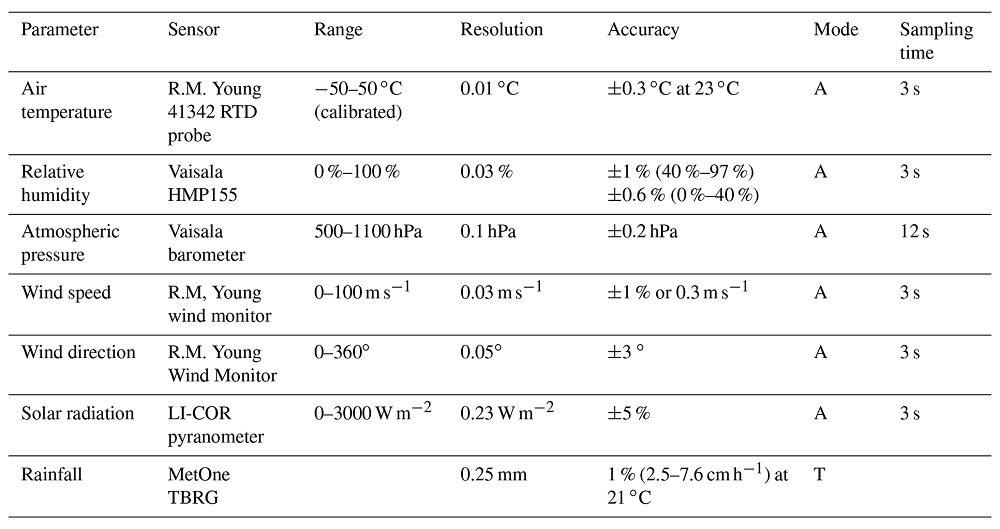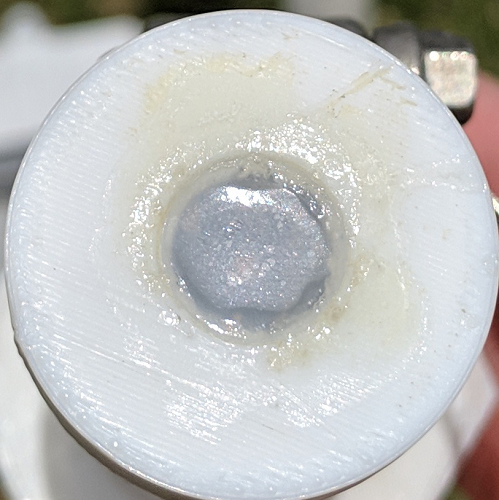For two years right out of college, I worked as an associate producer at a local CBS affiliate, and spent a lot of time learning the ins and outs of the TV station. I was mostly writing the anchor scripts, but I always loved watching the meteorologists, I thought their job was just fascinating. Weather stations all around the country, equipped with sensors and other instruments, monitor all the conditions, such as air temperature, precipitation, and wind speed, that go into these live forecasts. But these stations can also be valuable research tools for topics such as renewable energy generation and farming, to name a few.
Unfortunately, commercial stations are pretty expensive, which means they collect less climate data that’s available to fewer people. But a team of researchers with the University of Oklahoma and the US Department of Energy‘s Argonne National Laboratory recently published a study in which they created and evaluated a weather station made with less costly costly sensors and 3D printed parts, to see if it could perform as well as a commercial station.
The abstract states, “A weather station built using 3D-printed parts and low-cost sensors, based on plans and guidance provided by the University Corporation for Atmospheric Research 3D-Printed Automatic Weather Station Initiative, was deployed alongside an Oklahoma Mesonet station to compare its performance against standard commercial sensors and determine the longevity and durability of the system. Temperature, relative humidity, atmospheric pressure, wind speed and direction, solar radiation, and precipitation measurements were collected over an 8-month field deployment in Norman, Oklahoma.”

Location of the 3D printed weather station relative to the Oklahoma Mesonet. (Image courtesy of Google Earth)
The project leader was Adam K. Theisen, who was with the university when the project began but continued on after joining the team at Argonne as an atmospheric and Earth scientist. The team compared their 3D printed weather station with a commercial-grade version from Oklahoma Mesonet, a major network of environmental monitoring stations created and implemented by scientists at the University of Oklahoma and Oklahoma State University.. In order to gain a true sense of how accurately the 3D printed station would perform in real-world conditions, the comparative study went on for eight months, funded by the university’s Cooperative Institute of Mesoscale Meteorological Studies (CIMMS).
Theisen explained, “In order for this to get more widespread adoption, it has to go through verification and validation studies like this.”

Oklahoma Mesonet instrumentation. Mode definitions: I=instantaneous measurement; A=average over time; T=total. Temperature accuracy does not include the added uncertainty from the radiation shield.
Students at the university 3D printed over 100 parts for the weather station by following the open source plans that the 3D-Printed Automatic Weather Station (3D-PAWS) Initiative at the University Corporation for Atmospheric Research (UCAR) had created. They determined that acrylonitrile styrene acrylate, or ASA, would be a more durable filament for the outdoor parts than the typical choice of PLA, and got to work.
The 3D-PAWS Initiative had previously determined that low-cost, homemade weather stations were a promising possibility, but these new systems feature 3D printed parts, paired with inexpensive sensors, for the first time in this series of experiments, though we’ve definitely seen 3D printed weather stations before.

Ultraviolet index sensor using a plastic covering cut from a freezer meal tray. This image taken at the end of the study shows yellowing of the glue used to seal the edges.
After about five months, the 3D printed weather station was starting to show a little wear and tear, with parts degrading or even breaking, and the relative humidity sensor first corroded, and then failed. But, it’s not all bad news—the measurements it did capture approximately equaled those from the commercial Oklahoma Mesonet station.
“I didn’t expect that this station would perform nearly as well as it did. Even though components started to degrade, the results show that these kinds of weather stations could be viable for shorter campaigns,” Theisen said.
“If you’re talking about replacing two or three of these inexpensive sensors versus maintaining and calibrating a $1,000 sensor every year, it’s a strong cost-benefit to consider.”
The researchers found that the low-cost sensors they used in the 3D printed weather station were able to accurately measure pressure, rain, relative humidity, temperature, and UV. A few of the plastic 3D printed instruments, such as the anemometer for measuring wind speed, did not hold up quite as well in outdoor Oklahoma from the months of August to April 2018, which featured snow, strong rain, and temperatures from as low as 14°F all the way up to 104°F. But, with better print quality, the team believes they would do better.
3D printing can be very useful when it comes to fabricating specialized components and replacement parts in remote areas. Additionally, if a less expensive sensor breaks after a short period of time, the budget is still lower, and this type of weather station could actually be feasible for a location in a more isolated location like the desert.
This project served two important purposes: not only did it confirm that a 3D printed weather station could offer accurate results, but it was also an important educational tool.
“The students learned skill sets they would not have picked up in the classroom. They developed the proposal, designed the frame, and did most of the printing and wiring,” Theisen said.
(Source/Images: Argonne National Laboratory)
Subscribe to Our Email Newsletter
Stay up-to-date on all the latest news from the 3D printing industry and receive information and offers from third party vendors.
You May Also Like
Meet Xell, xolo’s Budget-Friendly Bioprinter for Labs
Building on its expertise in volumetric bioprinting, xolo has unveiled Xell. This compact bioprinter brings rapid fabrication of complex structures without visible layers to research labs at an unprecedented price....
Axolotl Biosciences Brings Biotech to the Forefront at Formnext 2024
Formnext 2024 is known as the world’s leading trade fair for industrial 3D printing, with towering machines and manufacturing giants filling its halls. Amid this industrial frenzy, Axolotl Biosciences, a...
BICO’s €26M Nanoscribe Sale Highlights Strategic Overhaul Under Forss
BICO (STO: BICO) announced its second divestiture since Maria Forss took over as President and CEO in November 2023. Following the sale of Ginolis last year, BICO has now entered...
3D Systems Pushes New Tech and Partnerships at Formnext
As one of the pioneering companies in additive manufacturing (AM), 3D Systems remains a key player to watch at Formnext 2024, where it is showcasing major partnerships, innovative technologies, and...





































